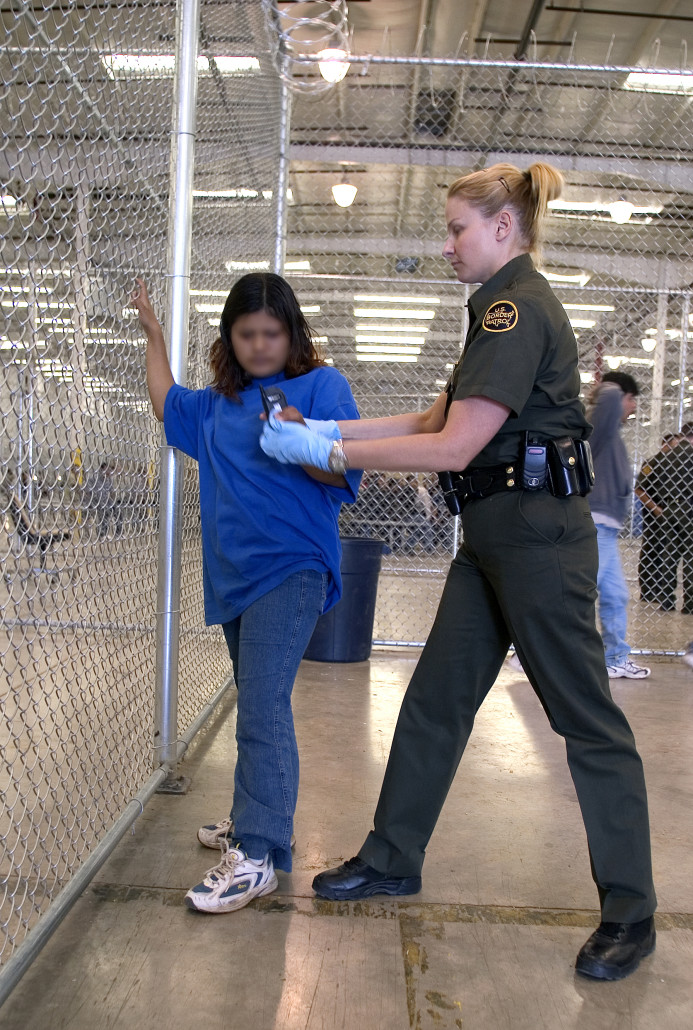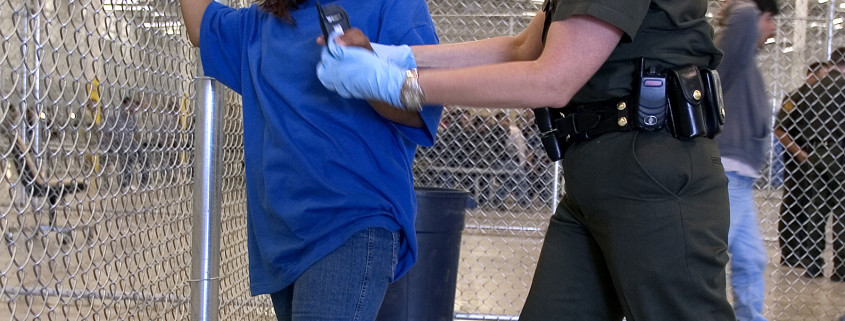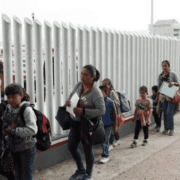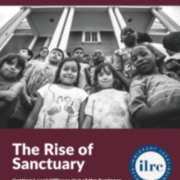En Nuestro País: Strained Hope in a Broken System

A Border Patrol agent with a young Central American immigrant in a detention center
BY GUEST BLOGGER | May 26, 2015
written by: Marisa LaBella, Walsh Jesuit High School ’15
In a press conference last Thursday morning, members of the House of Representatives gathered to urge that the Department of Homeland Security end its family immigration detention program. In partnership with those who have had a history of detainment and members of the American Immigration Lawyers Association, House Democrats advocated for the well-being of families whose psychological and physical health are at risk due to the harmful impacts of incarceration.
Annually, immigration detention centers in the United States hold more than 300, 000 immigrants. Since the Expedited Removal procedure was established in 1996, immigration inspectors have reserved the authority to remove non-U.S. citizens seeking entry without documentation. In this process, immigrants do not receive a hearing and are instead held in detention until their removal from the United States is complete. Asylum seekers are also among those held in detention until their status is determined or until their fear of returning to their country is proven to be credible. Instead of recognizing and addressing the interior economic and political issues of the governments that migrants are fleeing from, U.S. policymakers are interested in employing further methods of immigrant deterrence.
Over the years, detention of immigrants has been considered a merely temporary, though necessary, resolution to pending legal status or potential deportation; however, this “quick fix” to a complex and broken immigration system is only a catalyst for additional suffering on U.S. soil. The underlying reality in all cases of government justification is that detention facilities serve mainly as a deterrent for those seeking refuge in the United States. All undocumented immigrants are regarded as having a criminal record and are detained without individualized assessment as a means of ensuring that the larger community is free of threat. Among the fifty percent of immigrant detainees who have no criminal record are women and children. The lack of oversight surrounding the treatment of mothers and children in detainment is perhaps the leading source of evidence of a U.S. immigration system plagued with problems.
Recent years have revealed an influx of migration of Central American families arriving at the U.S. border after making perilous journeys from their homes, in what has become a last attempt at survival in most cases. The migration surge cannot be simplified into being a result of one significant event; instead, it is the result of several fatal and complex factors that lack simple solutions, including human trafficking, gang violence, drug cartel dominance, and a lack of political and economic stability. Because these governments often lack the resources and the ability to offer solutions, turmoil mars every facet of community, offering little opportunity and instead revealing every reason to escape. Though neither cause is more significant than the other, it is apparent that migrants’ necessities to flee home are exceptionally strong.
The grueling process that Central American immigrant families undergo in hopes of escaping violence is wrought by death; when life appears impossible at home, death remains ever-present in the path of migration through Mexico. If one is fortunate enough to survive the terrors of trafficking en route to the U.S.-Mexico border, they are soon apprehended by the U.S. Border Patrol where the promise of life fades into the hidden reality of hardship within immigrant detention facilities. When families, specifically women and children, arrive at the U.S. border, the question becomes why noncriminal deportation proceedings are conducted in such a punitive form by use of detention centers. The lives of these individuals become one of solitary confinement, familial separation, inadequate nutrition, medical neglect, human rights abuses, and lack of legal counsel. Immigrant suffering does not end at U.S. borders; it continues in a strained system.
The family immigration detention program undermines what we, as citizens of the United States who monetarily support these institutions, fail to provide: fundamental protection. The U.S. immigration system is broken, but detention centers remain at the heart of this brokenness. Our limited resources ought to be used in a way that promotes the dignity of all members of this system, especially immigrant families, so as to ensure that they might be able to seek protection in a meaningful way.
ISN’s Executive Director, Christopher Kerr joined nearly 1,500 faith leaders from around the country in signing a letter advocating for an end to family detention centers. The letter was delivered to White House staff on Thursday, May 21, and echoes the calls of a growing number of Congressional members, civil society groups, and advocates to end this inhumane practice once and for all. Learn more
ISN welcomes faith & justice related blog submissions from members of the Ignatian family. Please let us know of any blog ideas or posts using this form: ISN Blog Ideas











Leave a Reply
Want to join the discussion?Feel free to contribute!